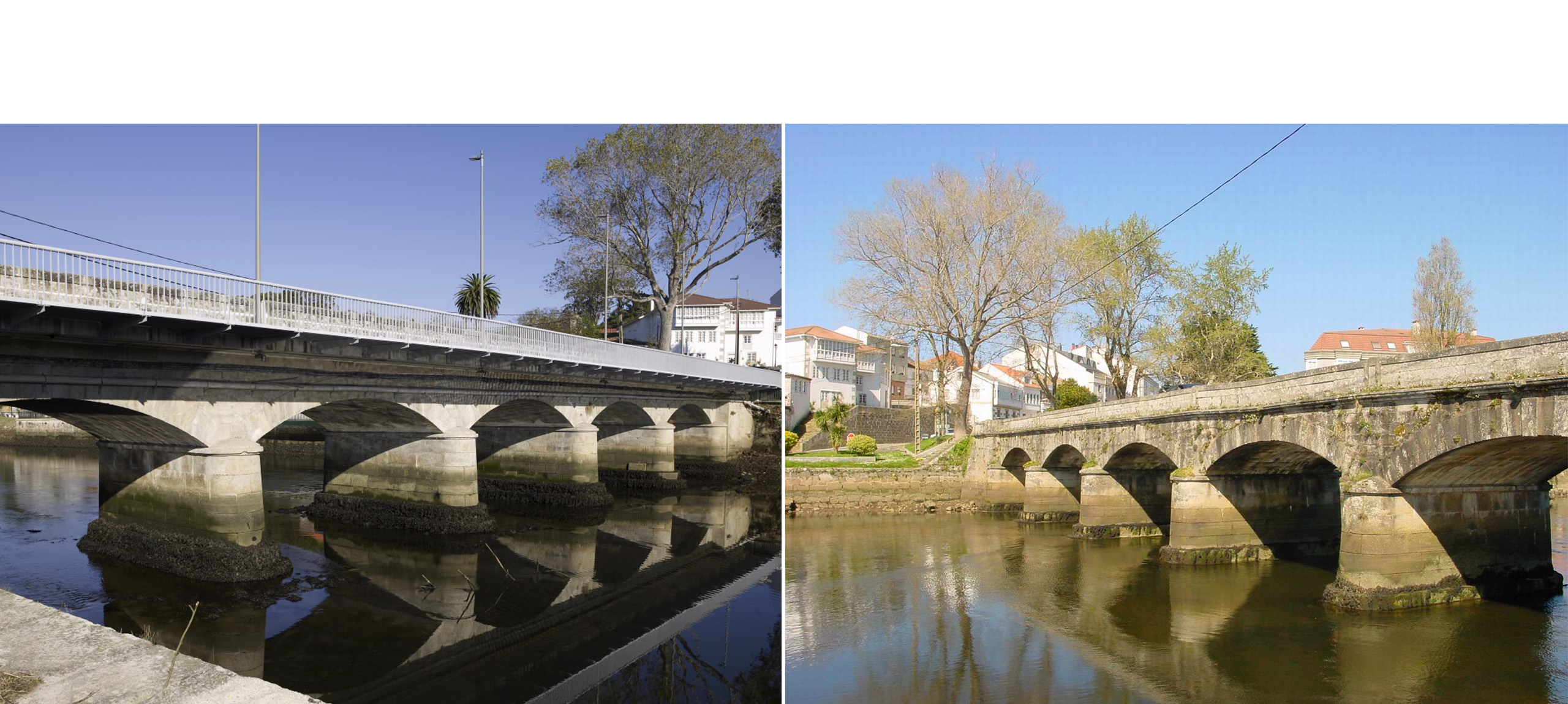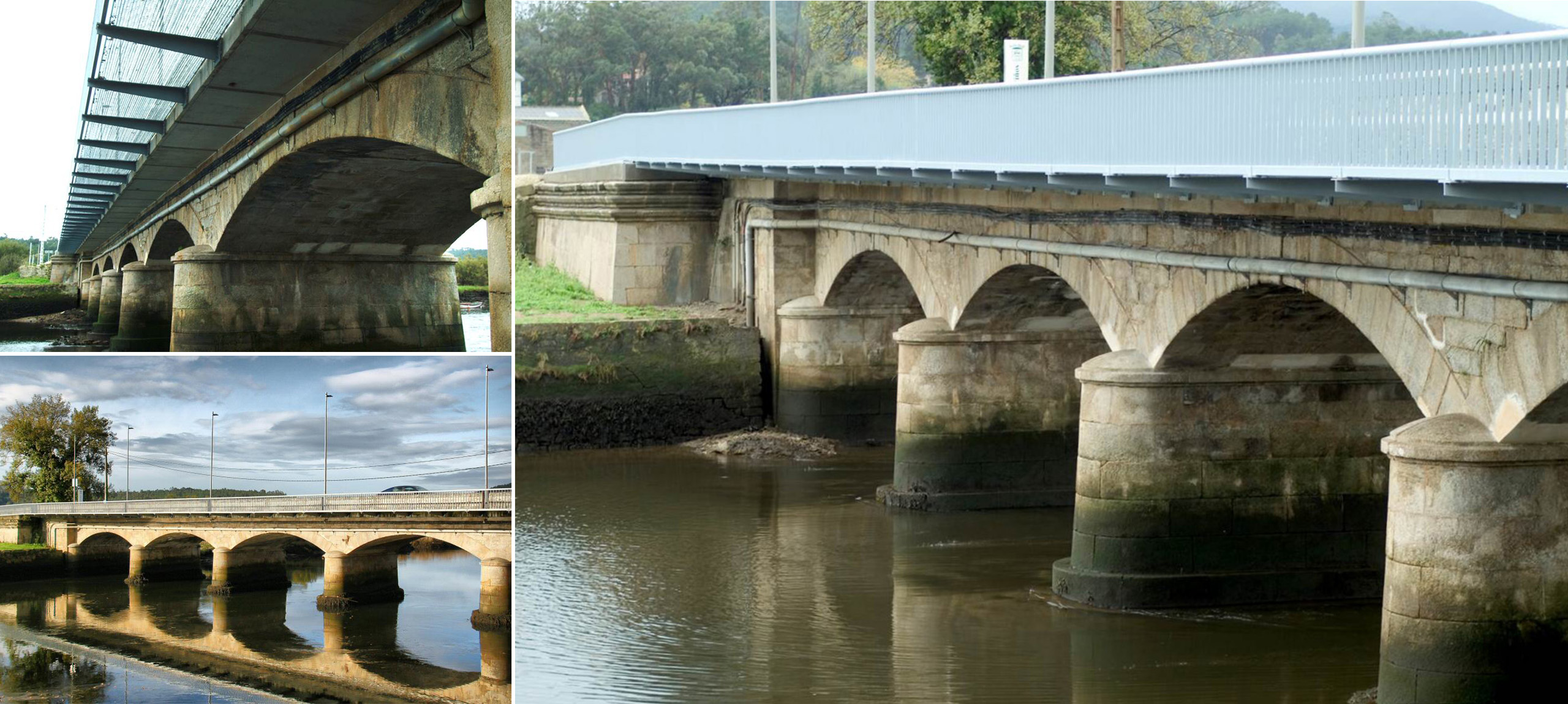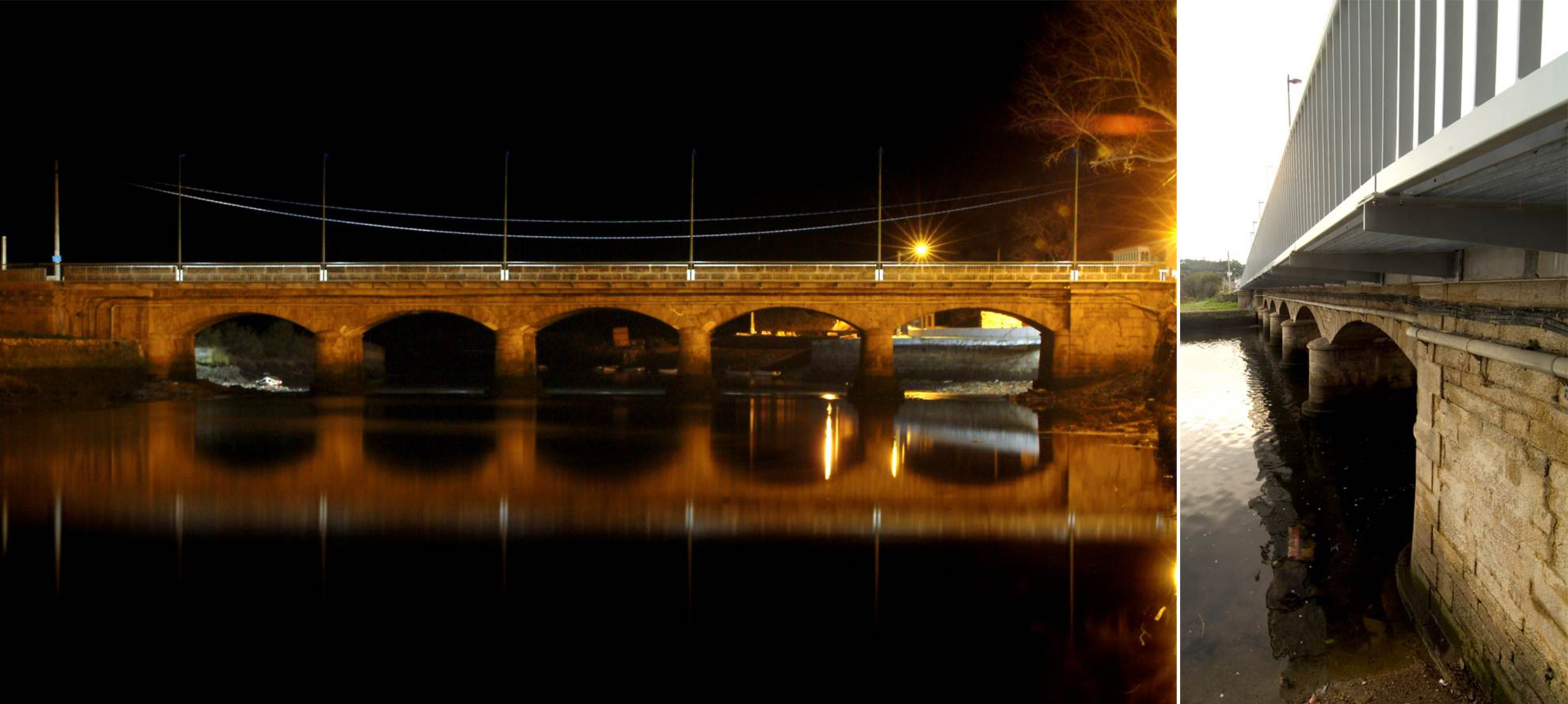
| Ponteceso Bridge restoration | |
| Ponteceso, Galicia, España | |
| Typologie | Rehabilitation Of Bridges |
| Date | Mai, 2008 |
| Mission | Restoration, widening and strengthening |
| Client | Xunta de Galicia |
The Ponteceso Bridge over the River Anllóns was built between 1868 and 1879, and allows the AC-430 road and pedestrian traffic to access the village of Ponteceso. The Anllóns River at Ponteceso is close to its flow into the Atlantic Ocean, thus influenced by tidal sea level variations with low tide water levels reaching the upper part of the foundations, and high tides rising up to 2.15m over the aforementioned level.
The Ponteceso Bridge is an Ashlar masonry arch bridge erected at the end of the nineteenth century. It is 50.0m long, and is composed of five vaults, spanning 10.0m between pier axis and an 8.50m free span at the maximum points of the barrel. The bridge has four piers which are set in the flow of the river. The vaults are 0.70 m thick and 6.00 m wide. All the bridge was erected in granite Ashlar, which remain in a good state of repair. Piers and abutments are foundationed on wood piles, upon a low bearing capacity soil. The current bridge deck is too narrow to allow road and pedestrian traffic to run smoothly.
The beauty of the bridge’s appearance is undermined by several ducts that cross the river braced to the upward stream spandrel walls, therefore spoiling the appearance of this beautiful construction.
The structure has, in fact, a patrimonial value, and it is included in the Historical Bridges Catalog of Galicia.
The Ponteceso Bridge is an Ashlar masonry arch bridge erected at the end of the nineteenth century. It is 50.0m long, and is composed of five vaults, spanning 10.0m between pier axis and an 8.50m free span at the maximum points of the barrel. The bridge has four piers which are set in the flow of the river. The vaults are 0.70 m thick and 6.00 m wide. All the bridge was erected in granite Ashlar, which remain in a good state of repair. Piers and abutments are foundationed on wood piles, upon a low bearing capacity soil. The current bridge deck is too narrow to allow road and pedestrian traffic to run smoothly.
The beauty of the bridge’s appearance is undermined by several ducts that cross the river braced to the upward stream spandrel walls, therefore spoiling the appearance of this beautiful construction.
The structure has, in fact, a patrimonial value, and it is included in the Historical Bridges Catalog of Galicia.








